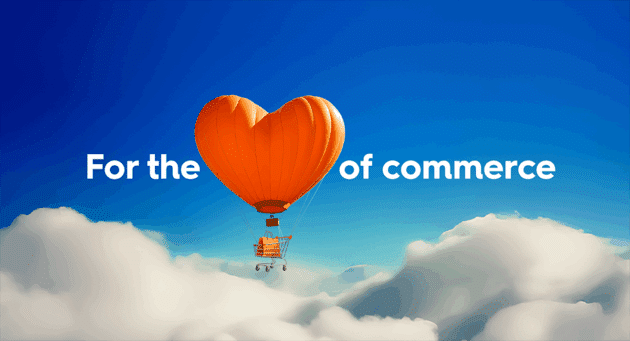Programmatic advertising is changing. As influence shifts from the buy side to the sell side, a maturing supply chain highlights the need for better solutions across the ecosystem.
The programmatic supply chain has become so complex in recent years that it’s become difficult for players to truly thrive or to create a differentiated offering. Moreover, the dynamic changes created by the impending cookie deprecation have resulted in additional challenges for identity resolution, targeting, and attribution.
Enter, curation.
With curation, all corners of the programmatic ecosystem—media buyers, publishers, and data owners—can interact in a new way to implement supply strategies, activate proprietary data assets, and achieve better outcomes, all without disrupting existing workflows.
Here’s how curation works for each of the three key players in the programmatic ecosystem: agencies, data providers, and publishers.
What is curation?
Programmatic curation is the process of developing a personalized data and supply portfolio, then packaging these assets together to create unique PMP-based deals which can then be sold and activated on the buy side though any DSP.
Because curation relies on existing programmatic workflows, it’s a quick and simple way for both the sell and buy side to transact. In fact, curated deals can be created and activated in a matter of minutes using the same programmatic channels which already power thousands of digital campaigns on the open web every day.
In this way, curation brings buyers and sellers back together, all while protecting data assets and unlocking competitive differentiation in a crowded marketplace.
Agencies
As programmatic evolves, so too does the role that agencies play in the industry.
Historically, agencies were chosen by brands based on their media buying savvy, their ability to optimize at scale, and their connections with specific publishers. As programmatic has matured, many of these points of differentiation have become homogenized through automated platforms and a disintermediated supply chain.
In short, agencies are facing a significant challenge in differentiating their offering from other agencies in the space, and they’re losing the benefits of the 1:1 media owner relationships—such as preferential rates. In turn, they’re unable to define a competitive advantage versus their peers.
So, can curation help here? You bet.
By becoming curators, agencies can:
- Centralize their programmatic campaigns. The supply chain has become spread across multiple paths to specific supply or audience segments. With curation, agencies can specifically choose where to funnel their buying power on behalf of their advertisers. This also means they more easily track investment management from one end to the other
- Enjoy more transparency (and less black box). Brands and advertisers have been concerned that their media dollars are disappearing into an ecosystem where everybody’s taking a cut. Curation solves this nicely, because agencies can pick the specific paths to specific publishers and layer in specific audience data. Even better, they can activate curated deals through their DSP of choice
- Restore their competitive edge. Curation re-opens the door to the 1:1 relationships that media buyers used to have with media owners. With curated deals, agencies can once again start to build preferential relationships through volume, aligned brand values, and more. This directly addresses the flattening of the programmatic playing field and makes competition once again a core focus of the game.
Data providers
The position of data providers in the programmatic ecosystem has always been a little precarious, because they’ve often been at the mercy of other players.
Being a middleman of sorts doesn’t mean data providers have an easy ride. In fact, it’s often the opposite that’s the case.
The core historic challenges faced by data owners in the programmatic space are as follows
- Lack of reporting visibility. Today, data providers have little visibility into exactly how and when their data is used. In conversation with buyers, they may expect a certain level of spend, and the respective payment. In reality, those buyers might not actually use the data as much as they planned, but the data provider won’t find out until the end of the month. Curation solves this issue and makes real-time usage tracking and revenue forecasting a viable option once more
- Difficulty reaching media buyers. Data segments are often tucked away in drop-down boxes within a DSP’s user interface, meaning data owners rely on the DSPs making them somewhat visible. In addition, some DSPs actually have limits on the number of data providers they’ll work with, meaning smaller players might not have a chance to be seen at all
- A lack of data safeguarding. While there is a level of obfuscation of audience segments, it’s not impossible to infer the content of specific segments based on what advertisers do with them. This represents a small, but real, risk to data owners and their proprietary ownership of the data
Luckily, curation can come to the rescue in this case once again.
Data providers who become curators can now package up their data with media on the supply side in the form of PMP deals, meaning they retain complete control over every segment in their roster. Not only that, but a key threat to data owners has been the imminent deprecation of third-party cookies. With curation, data providers will be able to layer in third-party audiences for advertisers using the identity resolution solution which works best for their particular workflow (contextual, third-party IDs, etc.), without the need to directly leverage third-party cookies.
Finally, data owner curators have the door wide open to almost any advertiser, because they’ll no longer rely on visibility in DSPs, or even being supported by DSPs. Instead, they can engage directly with media buyers and sell deals in precisely the way that suits them.
Publishers
While curation has a part to play for every corner of the industry, for publishers, it allows them to create additional revenue streams via the extension of their audiences off-network, without having to relinquish control of their data to the buy-side.
The first-party data publishers hold on every visitor to their website(s) is incredibly valuable to advertisers—and that will go double once third-party cookies disappear for good. The problem is that, to allow advertisers to target their audiences outside of owned and operated environments, they need to relinquish some control of their data—and they won’t necessarily get it back.
In addition to the inherent prospecting value of their audiences, publishers have another string to their bow, and that’s the monetization they can carry out on their audience themselves. In addition to any ads they already run, publishers can use audience extension to retarget their own visitors on the open web via third-party supply. Historically, this is carried out using an in-house trade desk run by the publisher, a venture which can be expensive, resource-intensive, and require significant setup.
Curation offers an elegant solution to both of these challenges
- First-party data can be protected. By layering publisher first-party data into curated deals, the publisher never needs to give direct access to their audience data to any other party. They’re in the driving seat at all times.
- Curation-based audience extension allows publishers to specifically target third-party supply which best aligns with their brand values and means they can target their audience off-property—even if they run no ads at all or have paid ad-free audiences.
The best part? All of this happens via the very same programmatic workflows that media buyers use day in, day out. That means curation is a natural fit for publishers looking to monetize their audiences in a low-friction way.
Take your first steps into the world of curation
Curation is still in the early stages of development, which spells one thing for would-be curators: opportunity.
Whether you’re an agency or brand media buyer looking to defragment your programmatic supply chain, a data owner on the hunt for a privacy-safe activation strategy, or a publisher with valuable first-party data and premium inventory, curation might be the future of your programmatic success.
To learn more about curation, and how your business can join the revolution, get in touch with Criteo Commerce Grid team today and we’ll help you get started.
























